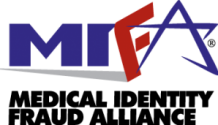MIFA Members and Partners, contact Ann Patterson for your complimentary copies of MIFA publications. Non-members please use the access links.
2016 Healthcare Industry Wisdom on Medical Identity Fraud
Healthcare Industry Wisdom on Medical Identity Fraud is a collection of expertise by anti-fraud experts to help businesses within the healthcare industry better understand how to deal with medical identity fraud. It offers various food-for-thought on what a healthcare organization or business associate might consider when building or fine-tuning their anti-fraud programs.
Topics discussed in the paper include a look at the Medical Loss Ratio mandate and how it may be affecting health plans’ ability to invest more heavily in fraud prevention, health IT issues, and patient authentication.
Key points include:
1. The changing landscape within the healthcare sector that may contribute to medical ID fraud.
2. Current and forward-looking fraud management practices.
3. Patient authentication and identity proofing.
4. Fraud mitigation planning.
It also includes a Resource Appendix with information to solutions offered by MIFA members and partners.
Access Industry Wisdom paper
2015 Healthcare Industry Investments to Fight Medical Identity Fraud
MIFA conducted a survey of its members and associates to better understand investments the healthcare industry is making to detect, prevent and mitigate medical identity theft and fraud. Analysis of the results from the 2015 Healthcare Industry Investments to Fight Medical Identity Fraud study paper will help us better understand investment approaches taken by companies in the healthcare industry in terms of dealing with identity theft and fraud. provides the following findings.
Results indicate the healthcare industry is trending upward for investments in technology, processes, programs and human capital to detect, prevent and mitigate medical identity theft and fraud.
Key Findings:
1. Technology investments garnered the highest dollar amount for budget allocations to detect, prevent or mitigate medical identity fraud.
2. Spending is not necessarily completely aligned with strategic priorities. While personnel and human resources/talent ranked highest in priority by 72 percent of respondents, spending is led by IT systems.
3. There is a slight upward trend in spending to detect, prevent and mitigate medical ID theft and fraud has decreased in only 4.17 percent of respondents.
4. Detection systems lead IT spending over prevention and mitigation. Nearly half of respondents listed detection systems as half or more of their total IT budget, compared to just 23% indicating they allocated half or more of their budget to prevention systems.
Access Healthcare Investments Paper
Victim Recovery Tips for Medical Identity Theft and Fraud
Follow these useful tips if you’ve been a victim of medical identity theft and/or fraud.
Medical Identity Fraud is Serious – Don’t Ignore the Signs and Begin Remediation Immediately.
Medical ID fraud can pose serious risks to your health if you receive the wrong type of healthcare due to an identity thief corrupting your medical records. Medical ID fraud is also one of the most difficult and costly identity crimes to resolve. The sooner you begin your remediation process, the better chances you can limit the damages.
Click here to learn recovery tips from MIFA.
Tips for Consumers to Reduce Medical Identity Theft and Fraud
Help protect yourself against this costly and potentially life-threatening type of identity fraud.
What are Medical Identity Theft and Medical Identity Fraud?
Both terms refer to crimes that involve the theft of Personally Identifiable Information (PII) from another individual. In the case of medical identity theft, this also includes Protected Health Information (PHI) – such as name, date of birth, social security number, health plan number and medical records. Fraud indicates the stolen PII or PHI was used for personal gain by another individual. In the case of medical identity fraud, such gain can be realized both from the sale of PHI to others and from the use of PHI to obtain medical goods and services. Perpetrators commit this crime to obtain unauthorized insurance benefits, prescription drugs, medical services, employment, government benefits or other financial gain.
Click here to learn prevention tips from MIFA.
Fifth Annual Study on Medical Identity Theft
The Fifth Annual Study on Medical Identity Theft measures the prevalence, extent and impact of medical identity theft to consumers and the healthcare industry in the United States. The incidence of medical identity theft continues to rise. This most recent report shows that it has nearly doubled since the first study five years ago. In 2014, there were almost 500,000 more victims than in 2013. Total annual out-of-pockets costs increased from $11B to $20B. And victims continue to experience serious risks, such as misdiagnosis, mistreatment and delayed healthcare due to corrupted health records.
Access ID Theft Study
Click here for the previous year’s report.
White Paper: The Growing Threat of Medical Identity Fraud: A Call to Action
Today, very few professionals or consumers are aware of medical identity theft and its’ potential for harm. Policy decision-makers, organizations that hold Protected Health Information (PHI), law enforcement, regulatory agencies and consumer facing groups now have an opportunity and obligation to bring this serious societal problem to the forefront and work together to protect the public.
